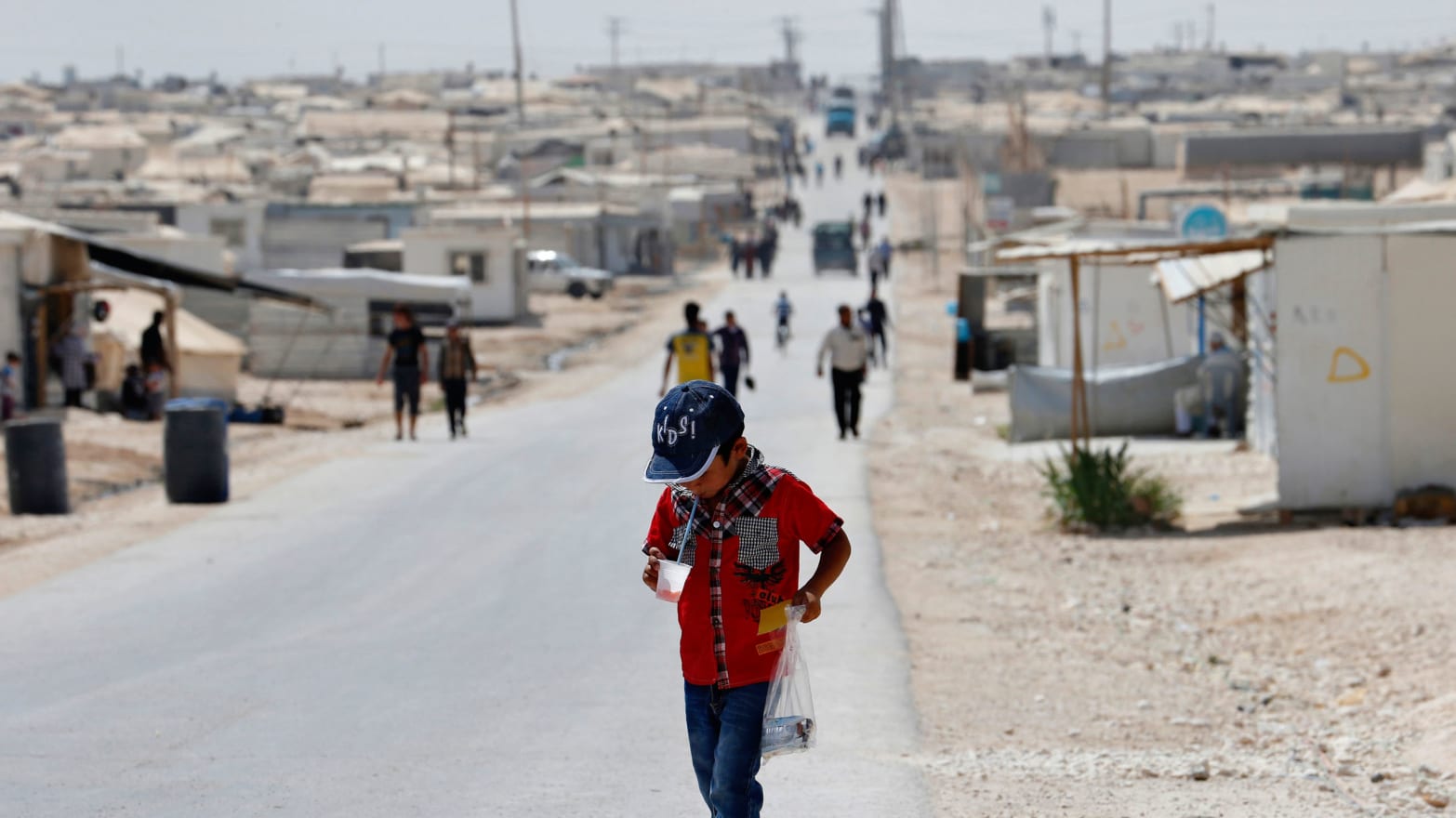In the refugee camps for Syrians and Palestinians at Shatila in southern Beirut, I met a 12-year-old refugee named Sabeen* whose face would give Adriana Lima a run for her money. Her skin radiates deep golden-brown and her light olive eyes evoke the iconic 1985 National Geographic cover of an Afghan girl. As she walked through the camp streets, she turned away lurid leers with a troubled glance. Old men in town ogled her. Aid workers befriended her, offering her parents “sponsorship” for their promising daughter, and she became a popular object of photographs by our workshop team leaders, even me. She knows she’s beautiful, but she doesn’t know that her beauty puts her at risk in the very camps where she seeks safety.
Sabeen is the child of refugees, her mother is Palestinian, and her father Syrian. She is rootless and stateless, having little in the way of rights or protection from exploitation. She lacks the wealth and luck of Adriana Lima, who was ushered into a life of privilege and superstardom as a teenager. Instead, she lives in miserable circumstances, only made more miserable by the attention her beauty earns. At the tender age of 12, her stunning feline features, with little covering them, earn her significant attention, most of it negative. Her rose-in-the-desert beauty was on display for every well-meaning journalist, humanitarian and horror-voyeur to observe and document in a macabre sideshow of survival.
Since the spring of 2011, 1.7 million Syrians have crowded into Lebanon, a country of 4.5 million, to escape mortal danger, kidnapping, and rape in the conflict devastating their homeland. Already at capacity with displaced Palestinians, Shatila is overwhelmed by Syrian refugees flooding across the border from Damascus and Aleppo. Families of four and five cram into one-room shares without running water or reliable electricity.
I spent the last week of August in Shatila and the soupy Bekaa Valley in Lebanon leading a music workshop for 1,200 Syrian children, including Sabeen, for a school year that may or may not happen this fall. Distance, transportation costs, language barriers, missed enrollment dates and parents’ lack of understanding of educational options for their children are some of the obstacles facing what the the Office of the United Nations High Commissioner for Refugees (UNHCR) estimates as 200,000 refugee children in Lebanon displaced by the Syrian civil war.
As an American traveler in a region scarred by conflict, I was prepared by nonprofit workshop leaders who had worked in the Syrian camps in Turkey and Jordan to expect kids coming in with burns, bandages, and missing limbs. But I was haunted by the psychic trauma all around me. Three-quarters of those displaced in Lebanon are women and children who have lost a family member to war and remain vulnerable inside and outside of their new community. A generation of Syrian kids have the far-away gazes of battle-hardened soldiers returning from war.
Displaced girls, especially, face the triple jeopardy of war, domestic violence and attacks from neighboring men. Only the immediate threat of war diminishes during the journey from Damascus to Beirut. Their new normal is neighbors, single women, engaging in survival sex with a series of resourceful men and widows pretending to call husbands who are really dead, all in a bid to seem less vulnerable to kidnappers, harassers, and attackers in their Lebanon.
According to the UNHCR, sexual assault and intimate partner violence are hard to quantify because, mostly, it is not being reported. In rural areas of Lebanon a victim’s family may limit women’s ability to leave the house, health services are too far away and a woman who is raped may be perceived as bringing dishonor to the community. Child marriage has made a strong comeback and girls as young as 15 are increasingly strong-armed into spring-winter unions by family members seeking “protection” in exchange for their girls. Statistics are not collected in Lebanon, but in Jordan, which also hosts a large Syrian refugee population, the UNHCR reports one in four refugee girls under 18 are married to men 10 or more years older. Families struggling to get by find it easier to marry off their teenage girls than to feed, shelter, and educate them.

Since the war began, sexual violence, including rape, is the most extensive form of violence faced by Syrian women and girls. A striking specimen like Sabeen is especially targeted by opportunists, rapists, and exploiters. She is lucky to have two parents who support, guide, and protect her, but many displaced children do not.
Sometimes, even those who are supposed to be helping the girls prey on them. On my first day of workshops, the summer camp was forced to relocate its operations from a Bekaa Valley farm when our team leaders discovered a young Lebanese man, said to be a relative of the landlord, propositioning 12- and 13-year-old Syrian girls in our care. He tried to schedule rendezvous with these children. He has money and land. They have need.
Too often, such predators occupy the shadowy crevices of their victims’ hell, but aren’t viewed as an existential threat. Alarmingly, the girls in our summer camp understood nothing abnormal about being offered gifts, a meal and a place to sleep in exchange for their company. The girls had bigger bogeymen in an August that brought an Islamic State invasion of the Lebanese border town Arsal, beheadings, and violent clashes between Lebanese authorities and Bekaa Valley organized crime gangs.
Not even the most fertile imagination could have conjured a better monster-in-the-dark than IS. The Brothers Grimm could not compete with stories spreading from city to city of savages that force children to use severed heads as soccer balls. By comparison, the terror caused by IS had reduced the perceived danger of a few opportunists who punch down the dignity and emotional integrity of refugee women and girls through offers that cannot be refused, because the needs of their families are too dire.
During a break between workshops in the Bekaa Valley, I met Noor*. At 13, she was covered from head to toe in white and pink layers and insisted on practicing her English, as did many Syrian kids her age. Her sunny, dimpled smile was betrayed by her hunched, buckled posture. Given that she was hot and hungry under a relentless midday sun, I asked her why she hid the chicken, bread, and soft drink given to her at lunchtime, but made sure her younger siblings had received and eaten their share. She quietly explained, “I am saving it for my mother and youngest sister at home.”
Noor was in the summer camp workshops the day the landlord predator was discovered and ejected. It is easy to understand how her noble willingness to sacrifice could be manipulated by a man preying on her sense of responsibility for her family.
Another girl I met at camp that day was Sarah*,18, an assistant teacher who tagged along with our partner NGO to manage the children who were officially too young to attend workshops. Fair-skinned, tall and svelte with intense black eyes, she sought me out, again to practice her English.
With sadness, she told me, “In Damascus I was in my second year of university studying American literature. I came to Bekaa with my family. There is no education for me here, so I teach English to children in the camp.” She is uncompensated. I asked her if she liked her new life. Without hesitation she replied, “I want to finish university. Maybe I will in Syria one day.”
Sarah's lack of options for education and employment increase the likelihood that she will have to engage in survival sex or will be coerced into prostitution. Before boarding a bus home, Sarah asked for my cell number and email address. To date I have not heard from her.
* Names have been changed to protect the girls.

